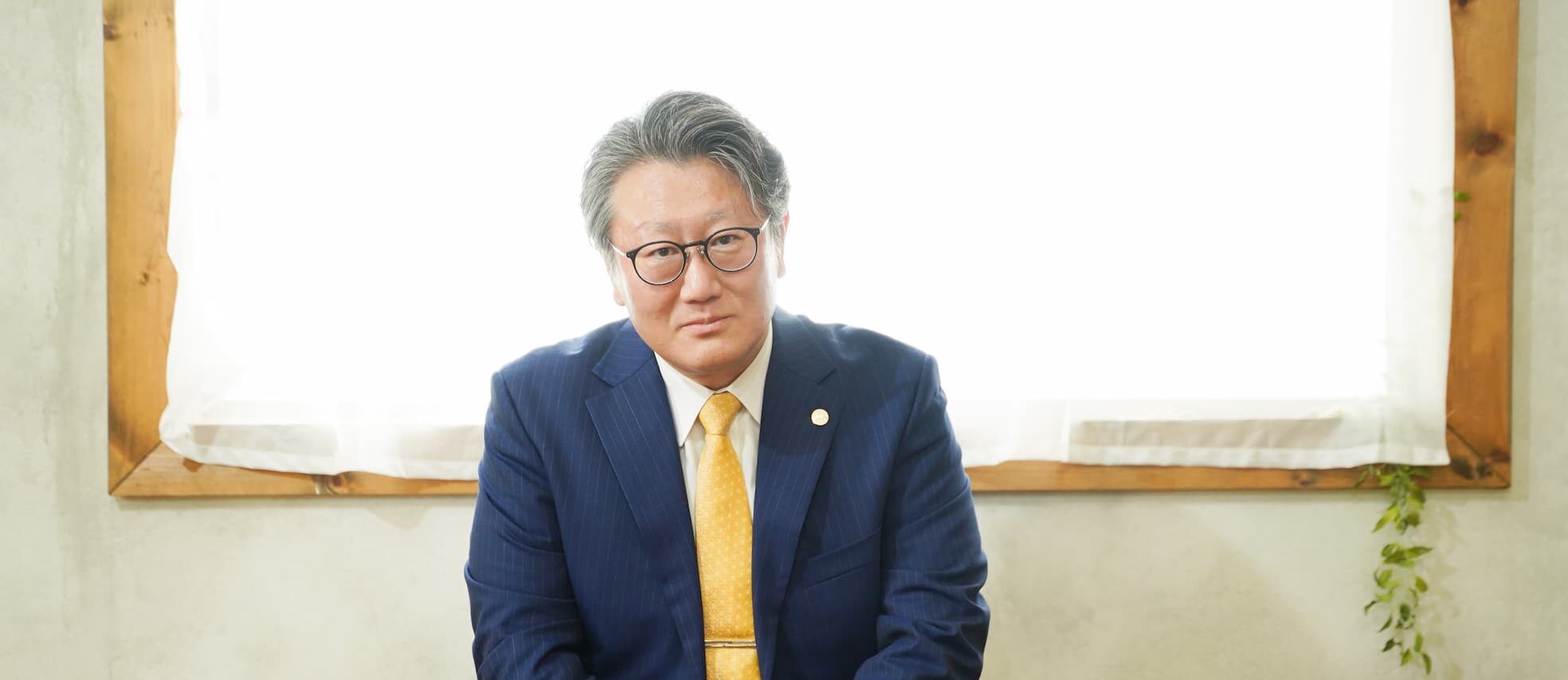FROM CLINICAL PASSION TO MARKET TRANSFORMATION: THE MAKING OF A HEALTHCARE PIONEER
In the evolving landscape of Japanese healthcare, where an aging population meets cutting-edge technology, few leaders embody the perfect synthesis of clinical insight and business acumen quite like Genji Tamura. As President & CEO of Ortho Edge Japan Co., Ltd., Tamura has redefined what it means to be a medical device distributor in the 21st century, transforming his company from a traditional intermediary into a strategic innovation platform that bridges the gap between global technological advancement and Japan’s unique healthcare demands.
His journey began in 1995 when he joined the Japanese branch of Zimmer (now Zimmer Biomet), entering an industry that would become his life’s passion. What started as a role in sales and marketing evolved into a comprehensive understanding of the orthopedic ecosystem, from surgeon relationships to hospital operations, from product development to regulatory navigation. This foundational experience would prove invaluable as he navigated through various leadership positions, each adding layers to his expertise and vision.
“From the beginning, I was drawn to orthopaedic because of its profound impact on people’s mobility and independence,” Tamura reflects. “Unlike many other fields, orthopaedic solutions can immediately restore a patient’s ability to walk, work, or enjoy their daily life again. This direct, visible outcome is incredibly motivating.”
BUILDING BRIDGES: THE STRATEGIC EVOLUTION OF A MARKET LEADER
Tamura’s tenure at Lima (now ENOVIS) as Representative Director and Executive Vice President marked a crucial phase in his professional development. Here, he shouldered responsibilities that extended far beyond traditional sales leadership, encompassing strategic planning, budgeting, and the complex process of introducing international products to the Japanese market. His initiatives in expanding Lima’s market presence, particularly through the introduction of MIS (minimally invasive surgery) techniques and innovative solutions in hip and knee reconstruction, demonstrated his ability to identify and capitalize on emerging clinical trends.
The experience deepened his understanding of unmet clinical needs and the operational challenges faced by both surgeons and medical institutions. More importantly, it crystallized his vision for a more collaborative and agile distribution model that would later become the cornerstone of his entrepreneurial ventures.
In 2019, Tamura took a bold step by establishing D&L CONNECTIONS, a consulting company dedicated to supporting collaboration between manufacturers, hospitals, universities, and public agencies. This venture represented more than a business opportunity; it was the manifestation of his belief that sustainable healthcare innovation requires ecosystem-wide collaboration rather than isolated technological advancement.
Through D&L CONNECTIONS, Tamura led numerous practical innovation projects, connecting regional manufacturing companies with clinical partners, supporting new product development, and building evaluation frameworks in close collaboration with government programs. These initiatives not only generated business value but also contributed to the broader goal of strengthening Japan’s healthcare infrastructure.
REDEFINING DISTRIBUTION: THE ORTHO EDGE JAPAN REVOLUTION
When Tamura assumed the role of President & CEO of Ortho Edge Japan Co., Ltd. in 2023, he brought with him a revolutionary vision for what a medical device distributor could become. Rather than accepting the traditional role of a passive intermediary, he envisioned the company as a strategic platform that would actively contribute to healthcare innovation while serving the unique demands of the Japanese market.
“We see ourselves not merely as a distributor, but as a platform for sustainable industry development,” Tamura explains. “By fostering a culture of challenge and creativity, our team contributes to real healthcare innovation.”
This vision translated into concrete achievements that speak to the effectiveness of his approach. Under his leadership, Ortho Edge Japan achieved the top orthopedic market share in Japan in less than two years, earning the trust of both global manufacturers and domestic clinical partners. The company’s success was formally recognized in 2024 when it received the “Top Orthopedic Solutions Provider in APAC” award, a testament to the transformative impact of Tamura’s strategic vision.
THE ART OF STRATEGIC MARKETING: LESSONS FROM THE FIELD
Tamura’s approach to marketing in the highly regulated orthopedic device industry exemplifies the sophisticated thinking that has driven his success. Rather than competing on price in oversaturated markets, he advocates for value-based positioning that addresses genuine clinical needs.
One of his most impactful strategies involved the repositioning of a commoditized hip implant product. Instead of accepting the product’s declining market position, Tamura’s team re-evaluated its clinical outcomes and collaborated with surgeons and key opinion leaders to validate a new usage pattern. This comprehensive approach led to the development of an innovative solution that addressed previously unmet needs in the hip implant market.
“We then created a targeted educational program and shared clinical results through professional societies, establishing a new value proposition for the product and driving significant growth in a declining segment,” Tamura recalls. This example illustrates his fundamental belief that successful marketing in healthcare requires deep clinical understanding rather than superficial promotional tactics.
At Ortho Edge Japan, this philosophy has been scaled into a systematic approach that redefines the role of a distributor. Rather than competing with existing sales channels, the company forms regional alliances with local dealers and provides comprehensive support in training, logistics, and KOL engagement. This collaborative model has proven highly effective, contributing to the company’s rapid market success while building sustainable partnerships throughout the healthcare ecosystem.
NAVIGATING REGULATORY COMPLEXITY: LESSONS FROM THE JAPANESE HEALTHCARE LANDSCAPE (EXPERIENCE AT LIMA/ENOVIS)
Japan’s regulatory environment presents unique challenges for medical device companies, requiring sophisticated navigation skills and deep understanding of local requirements. During his tenure at Lima (now ENOVIS), Tamura developed an approach to regulatory affairs that reflected his broader philosophy: treating compliance not as a constraint, but as a foundation for building long-term trust.
“We involved regulatory experts from the earliest planning stages to ensure all claims and indications were accurate, compliant, and aligned with Japanese regulatory standards,” Tamura explains. “Rather than viewing legal compliance as a limitation, we treated it as a foundation for building long-term trust with healthcare professionals and strengthening our reputation in the market.”
This proactive approach was also applied to product launches, where Tamura emphasized early cross-functional alignment. Project teams were formed from the outset to include regulatory affairs, logistics, sales, and marketing professionals. Each launch plan began with a robust risk assessment that addressed potential challenges not only in PMDA filings but also in hospital procurement, reimbursement pathways, and clinical adoption.
Tamura’s commitment to internal education further distinguished his approach. Launch toolkits were developed to go beyond promotional content, including training modules on objection handling, safety data interpretation, and competitive positioning. The goal was not just to launch a product, but to prepare the broader market ecosystem to receive it successfully.
TRANSFORMING CUSTOMER RELATIONSHIPS: FROM TRANSACTIONAL TO STRATEGIC (INSIGHTS FROM HIS MANUFACTURER EXPERIENCE)
Tamura’s evolution as a sales leader reflects broader changes in the healthcare industry, where successful companies must move beyond product-focused transactions to solution-based partnerships. Much of his philosophy and methodology in customer engagement was shaped during his time at leading medical device manufacturers, where he transitioned from traditional product-centric sales to strategic, value-driven relationships.
“During my time in the manufacturing industry, I encouraged our teams to take a 360-degree view of each customer,” Tamura explains. “Not just clinical needs but also administrative goals, patient education, and even regional demographic trends. This comprehensive understanding enabled us to propose solutions that resonated far beyond the operating room.”
This approach translated into practical strategies for engaging hospitals. Rather than simply presenting products, Tamura and his teams developed comprehensive proposals that included management support, educational strategies, and human resource development. This holistic mindset laid the groundwork for building long-term, trusted partnerships that extended beyond individual product sales.
The foundation of these relationships remained personal trust and clinical understanding. Tamura emphasizes that true engagement begins with listening carefully and responding flexibly to clinical needs. By collaborating on education, research, and market development, his teams fostered co-creative partnerships that delivered value for all stakeholders while contributing to improved patient outcomes.
STAYING AHEAD OF INNOVATION: THE CONTINUOUS LEARNING IMPERATIVE
In rapidly evolving fields like orthopedic surgery, staying current with technological advancement requires systematic commitment to continuous learning. Tamura’s expertise in areas such as hip joint procedures and minimally invasive surgery stems from his active participation in domestic and international conferences, where he stays informed about market shifts and technology trends.
Rather than remaining a passive consumer of information, Tamura also pays close attention to universities and engineering faculties, actively seeking out new technologies from a practical clinical perspective. Through these efforts, his company does not merely follow trends, but plays an active role in shaping them.
“We offered hands-on training for surgeons in collaboration with KOLs, including cadaver-based training overseas,” Tamura notes. “Internal programs covered not only product knowledge but also field response and compliance. Effectiveness was quantitatively evaluated through adoption rates, satisfaction, and error incidence.”
This systematic approach to education and training reflects Tamura’s understanding that successful innovation requires not just technological advancement but also the development of human capabilities to effectively utilize new tools and techniques.
BUILDING GOVERNMENT PARTNERSHIPS: THE COLLABORATIVE APPROACH
Tamura’s approach to government relations demonstrates his understanding that sustainable healthcare innovation requires active collaboration with public sector stakeholders. Rather than viewing government agencies as regulatory obstacles, he has built relationships grounded in shared commitment to improving healthcare outcomes.
Through D&L CONNECTIONS, Tamura has led public-private initiatives that match the technologies of local manufacturing companies with research seeds from universities and academic institutions. These programs have not only generated business opportunities but also contributed to broader economic development goals.
This collaborative approach continues at Ortho Edge Japan, where the company partners with local governments to pilot the introduction of new medical technologies. These projects not only support the revitalization of regional economies but also demonstrate the company’s strong commitment to achieving sustainable healthcare.
“My approach is grounded in building long-term trust,” Tamura explains. “I have participated in government-led programs that promote industry-academia collaboration, regional innovation, and SME support.”
MASTERING ORGANIZATIONAL TRANSFORMATION: THE ACQUISITION EXPERTISE
Tamura’s experience managing acquisition processes provides valuable insights into the complexities of organizational transformation in the healthcare industry. His approach to mergers and acquisitions emphasizes minimizing customer disruption while maximizing strategic value.
In a 2015 acquisition, the greatest challenge was maintaining service continuity during the integration process. Through transparent communication, thorough field training, and solid logistics planning, Tamura’s team completed the integration in four months. This experience provided a template for subsequent M&A activities, including two successful deals in 2023.
The key to successful acquisitions, according to Tamura, lies in comprehensive planning that addresses not just financial and legal considerations but also operational and cultural integration. His teams build forecasting models based on field data and historical performance, which inform recruitment plans, inventory strategies, and distribution approaches.
“We conducted quarterly reviews to ensure strategic agility and sustainable management.
Tamura notes. This systematic approach to performance monitoring ensures that acquisitions deliver promised value while maintaining operational excellence.
LEADERSHIP PHILOSOPHY: EMPOWERMENT AND ACCOUNTABILITY
Tamura’s leadership style reflects his broader philosophy of empowerment and accountability. Rather than relying on hierarchical control, he believes that individuals perform at their highest level when given ownership and clear understanding of the broader mission.
“My leadership style is centered on empowerment, accountability, and transparency,” Tamura explains. “I believe that when individuals are given ownership and clearly understand the broader mission, they naturally perform at a high level.”
At Ortho Edge Japan, this philosophy translates into a decentralized, partner-driven model that works closely with local distributors and group-affiliated companies. To align this diverse network, Tamura places great importance on open communication, shared KPIs, and a culture of mutual respect.
The focus on developing internal leadership talent further distinguishes Tamura’s approach. Rather than simply managing current operations, he actively creates environments that support the self-driven growth of future leaders, ensuring organizational sustainability and continuous innovation.
ENVISIONING THE FUTURE: TECHNOLOGY AND DEMOGRAPHICS
Tamura’s vision for the future of orthopedic innovation in Japan is shaped by his understanding of both technological possibilities and demographic realities. Japan faces unique challenges including population aging and regional healthcare gaps, creating both obstacles and opportunities for innovation.
“Japan faces unique challenges like population aging and regional healthcare gaps,” Tamura observes. “I believe AI, preventive medicine, and affordable robotics will drive the next wave of innovation.”
His vision for Ortho Edge Japan’s role in this transformation is characteristically ambitious yet grounded in practical understanding. The company will continue to serve as a bridge, bringing cutting-edge technologies to clinical frontlines, scaling innovation through M&A, and nurturing the next generation of healthcare talent.
This future-oriented perspective reflects Tamura’s understanding that successful healthcare companies must balance current operational excellence with strategic preparation for emerging challenges and opportunities.
RECOGNITION AND INDUSTRY LEADERSHIP
Tamura’s contributions to the orthopedic industry have been formally recognized through prestigious awards that acknowledge both his individual achievements and his company’s impact. In 2025, he was honored to receive the “Healthcare Elite of the Year (Japan)” award from the Fluxx Awards, recognizing his contributions to innovation and leadership in the orthopedic field.
This recognition, combined with Ortho Edge Japan’s 2024 award as the “Top Orthopedic Solutions Provider in APAC,” validates the effectiveness of his strategic approach and the value his company brings to the healthcare ecosystem.
These accolades represent more than individual achievement; they reflect the broader impact of Tamura’s philosophy on the industry. His approach to distribution, customer relationships, and innovation has created value not just for his company but for the entire orthopedic ecosystem in Japan and beyond.
THE LEGACY OF VISIONARY LEADERSHIP
Genji Tamura’s career demonstrates that transformative leadership in healthcare requires more than technical expertise or business acumen alone. His success stems from the integration of clinical understanding, strategic thinking, and genuine commitment to improving patient outcomes.
His approach to building bridges between global innovation and local healthcare needs provides a model for other leaders navigating similar challenges. By treating distribution as a strategic platform rather than a transactional process, he has created sustainable value for all stakeholders while contributing to the advancement of orthopedic care in Japan.
As the healthcare industry continues to evolve, leaders like Tamura will play crucial roles in ensuring that technological advancement translates into improved patient outcomes. His emphasis on collaboration, continuous learning, and strategic thinking provides a roadmap for sustainable success in an increasingly complex and demanding environment.
The future of orthopedic innovation in Japan and beyond will be shaped by leaders who understand that true transformation requires both technological capability and human wisdom. Genji Tamura’s career exemplifies this understanding, demonstrating that visionary leadership can drive meaningful change while building sustainable business success.




